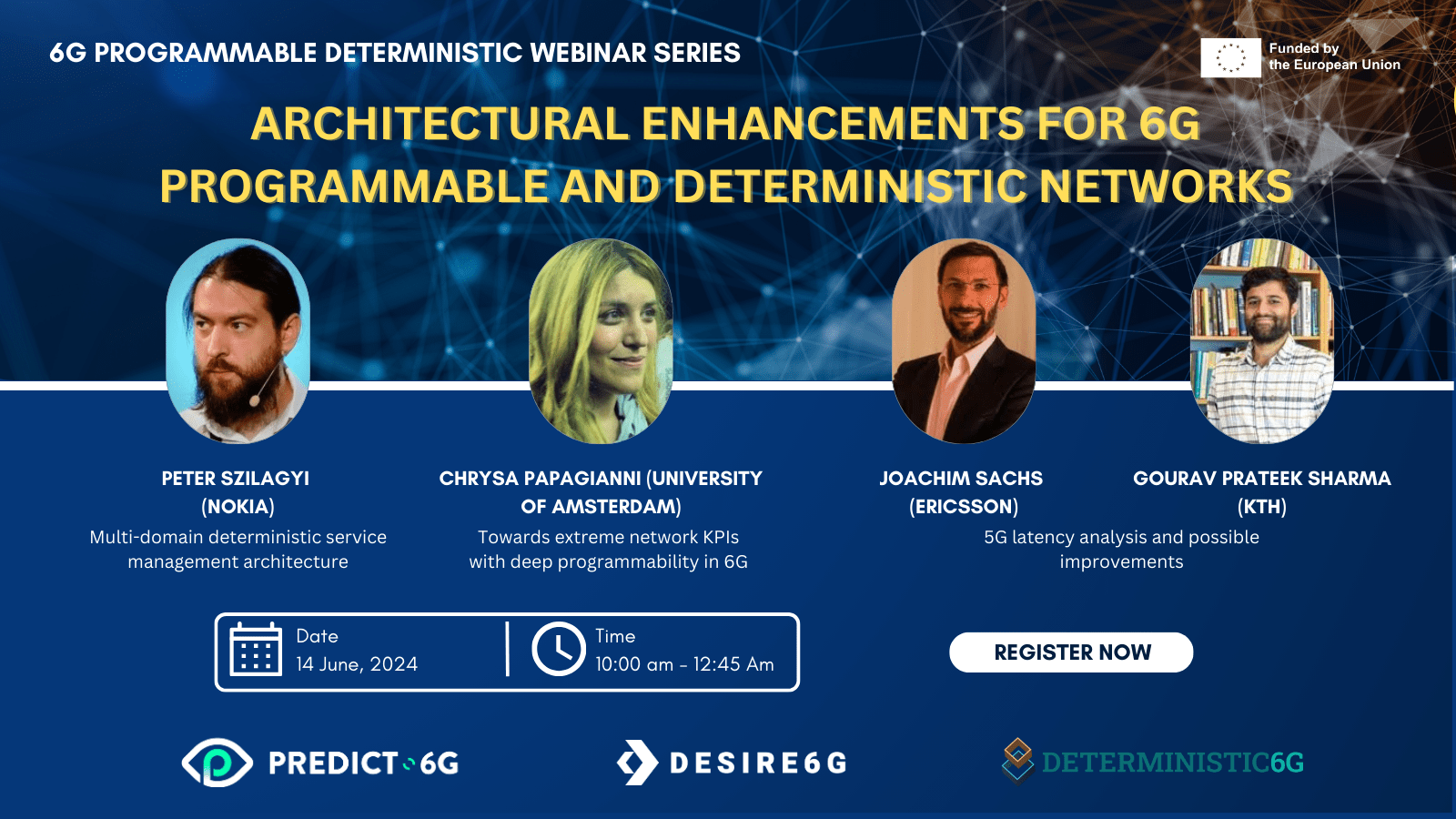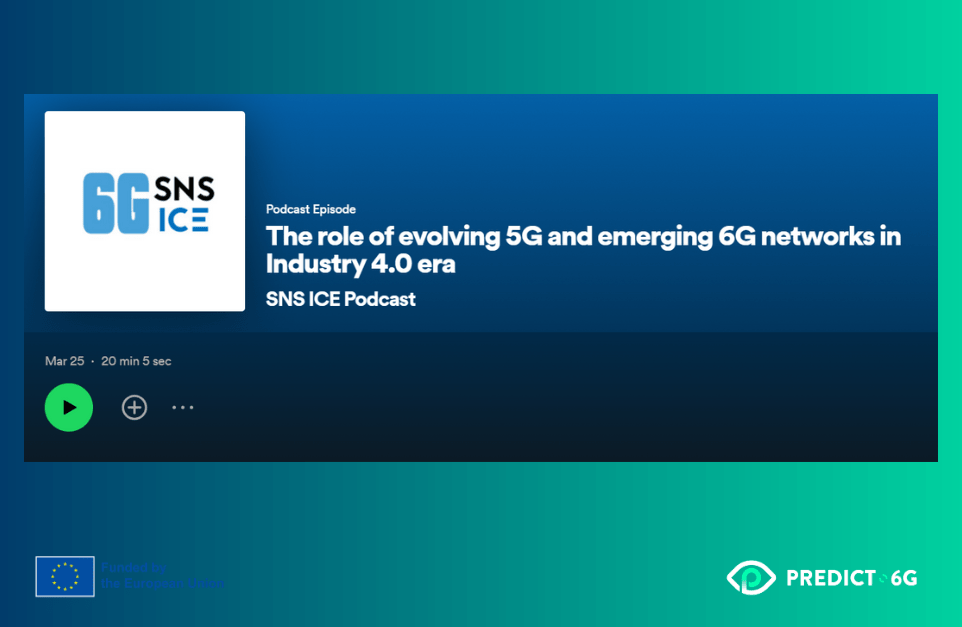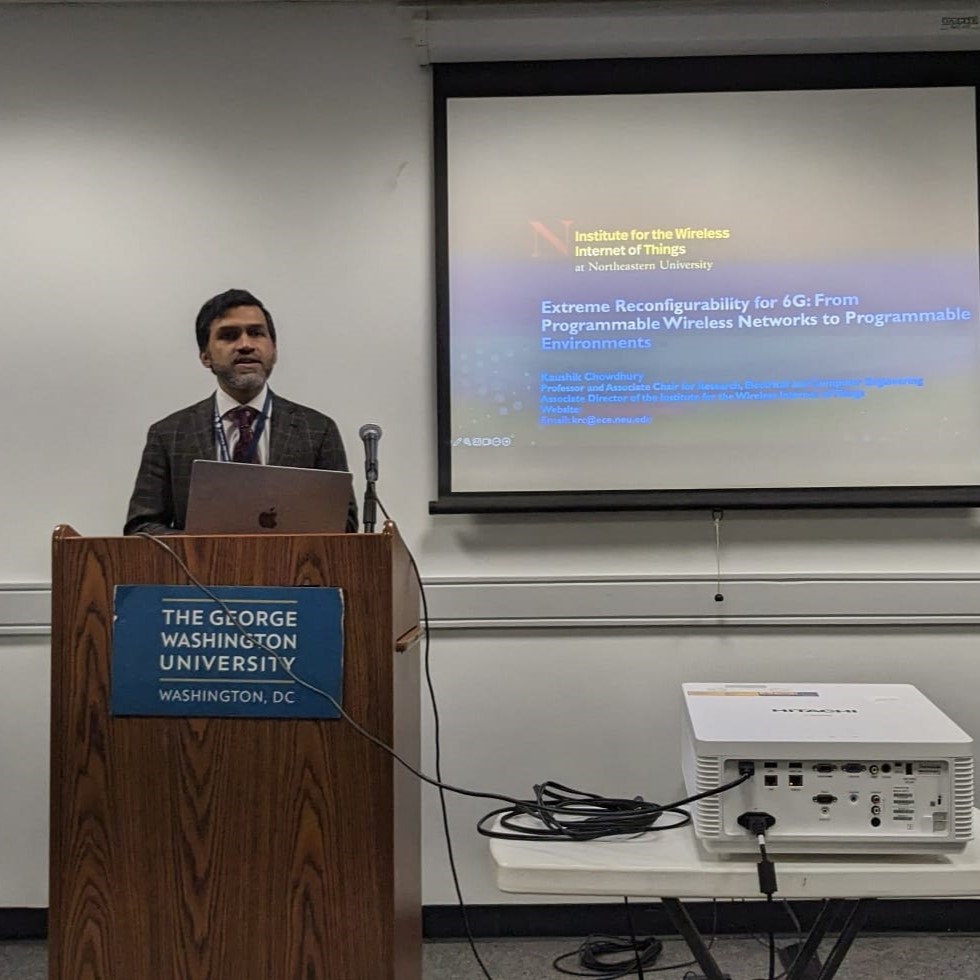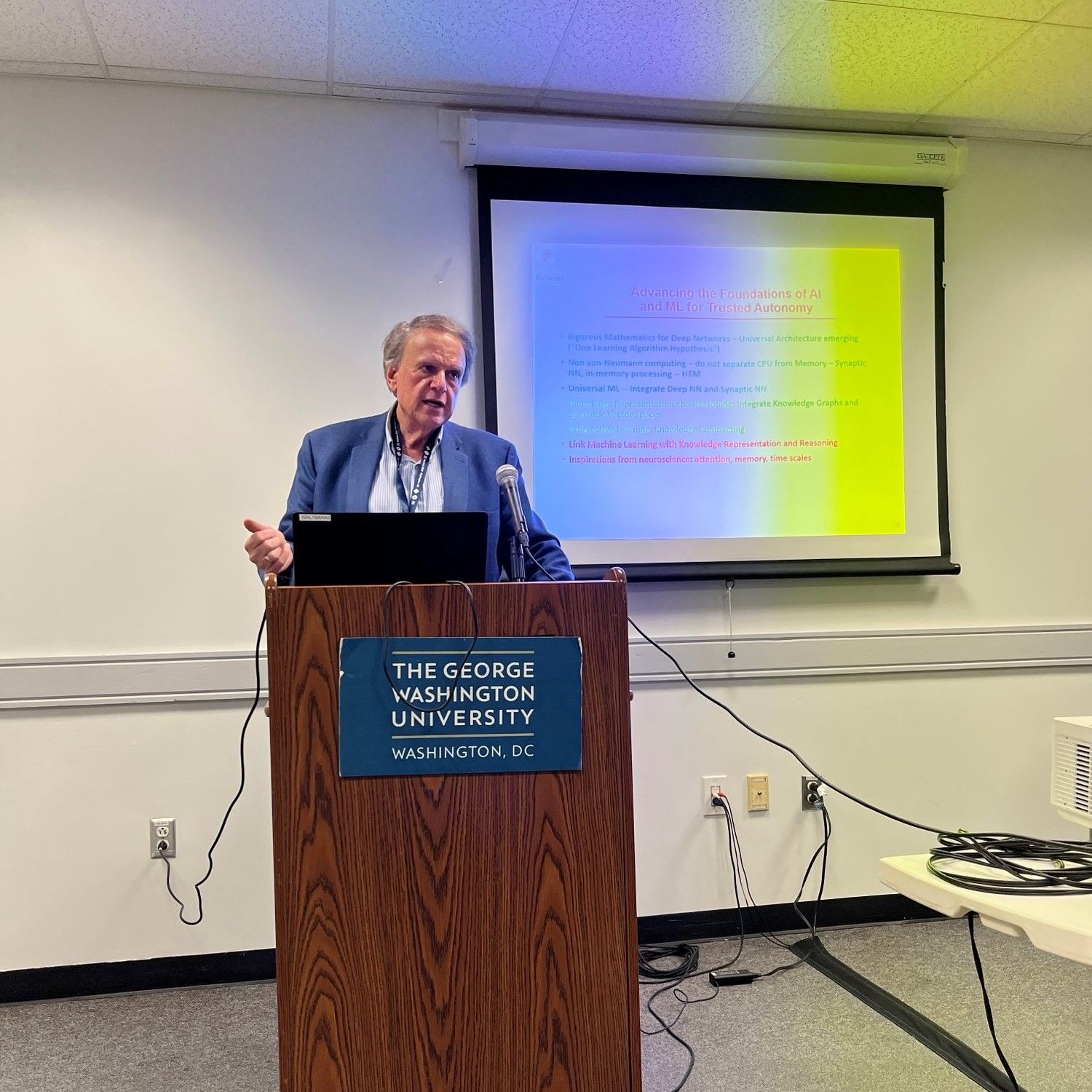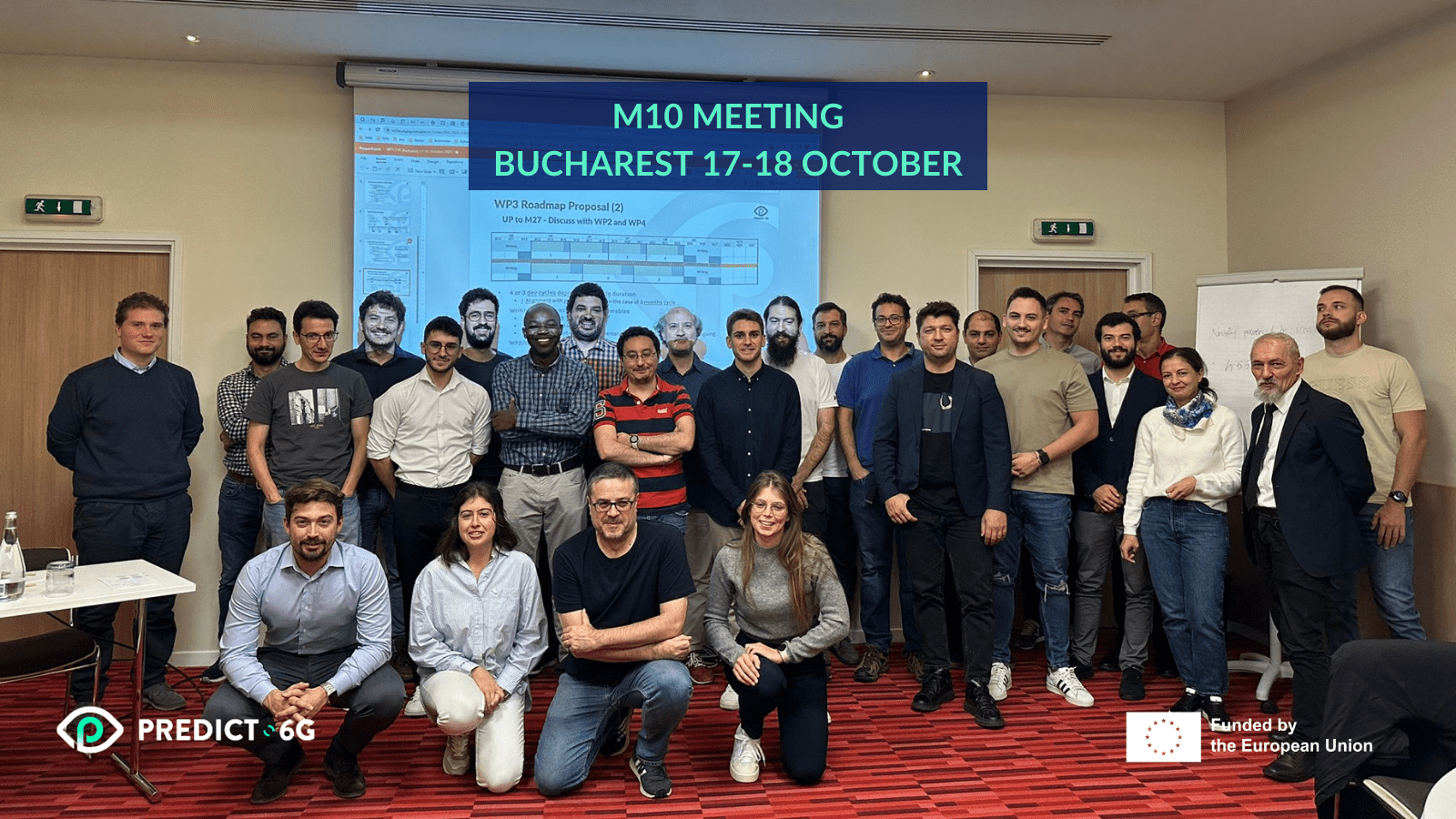The “6G Programmable Deterministic Webinar Series: Architectural Enhancements for 6G Programmable and Deterministic Networks”
The “6G Programmable Deterministic Webinar Series'' was launched on the 14 of June 2024, a collaborative initiative between PREDICT-6G, DESIRE6G, and DETERMINISTIC6G. This quarterly series aims to explore the intricate and transformative aspects of these sister projects, featuring expert speakers who will discuss the latest developments and innovations shaping the future of 6G technology. Each session provides in-depth information and fosters key discussions for practitioners and researchers dedicated to the next generation of wireless communications.
The first webinar, titled "Architectural Enhancements for 6G Programmable and Deterministic Networks" featured Peter Szilagyi from Nokia, Chrysa Papagianni from the University of Amsterdam, Joachim Sachs from Ericsson, and Gourav Prateek Sharma from KTH. This was followed by a panel discussion on the topic. The event saw over 120 registrations, with lively participation from attendees during the presentations and the discussion panel.
You can watch the full workshop here.
If you want to stay updated about PREDICT-6G, subscribe to our newsletter and follow us on Twitter and LinkedIn!
PREDICT-6G celebrates the Citizen Science Month
Determinism, 6G, reliability or predictability are just some of the words at the core of PREDICT-6G work. Setting a common understanding on these concepts is therefore essential to efficiently communicate about the different activities carried out by the project team, inviting the participation of the community as well as the society at large into the research.
With this in mind, PREDICT-6G joined the Citizen Science Month with a social media campaign shedding light on some of the most common concepts used in the project. During April 2024, there were various publications explaining the meaning of the keywords that have come to constitute the shared vocabulary of the PREDICT-6G team.
The engagement of the community with the campaign was highly positive, including several remarks about the value of contributing to set a common ground to speak about deterministic networks.
If you want to stay updated about PREDICT-6G, subscribe to our newsletter and follow us on Twitter and LinkedIn!
PREDICT-6G presents at the Architecture WG
Continuing PREDICT-6G’s ambition to contribute to the different SNS-related Working Groups, José Luis Cárcel, R&D Engineer at the Smart Networks & Services unit of Eviden and member of the project, delivered a presentation in the last meeting of the Architecture WG, held on the 1 of March 2024.
The presentation provided an overview of PREDICT-6G System Architecture, describing the set of technologies and services integrated across the two main architectural planes - the Multi-Domain multi-technology data plane (MDP) and the and AI-driven inter-domain control plane (AICP) - to achieve determinism.
The Working Groups offer a space to present the progress achieved whilst opening rich discussions amongst experts. These insights and feedback are extremely valuable to validate the developments of PREDICT-6G and help to define the next steps.
You can read the presentation here.
If you want to stay updated about PREDICT-6G, subscribe to our newsletter and follow us on Twitter and LinkedIn!
6G SNS ICE Podcast: The role of evolving 5G and emerging 6G networks in Industry 4.0 era
Following the publication of the 5G-PPP Technology Board whitepaper on Innovation Trends in I4.0 enabled by 5G and Beyond Networks, the 6G SNS ICE project interviewed Manuel Lorenzo, Head of Technology & Innovation at Ericsson Spain, one of the PREDICT-6G partners, and editor and coordinator of this 5G-PPP whitepaper, for the latest episode of its podcast.
In a 20-minute conversation with Professor Ioannis Tomkos, Manuel Lorenzo covers many of the highlights and insights from their research on the convergence of 5G and I4.0, along with our best estimates for what the future still holds for us in this context. This 5G-PPP whitepaper captures the collective experience and analysis of a broad range of 5G-PPP projects addressing I4.0 challenges and scenarios, complemented with new views and perspectives from the SNS JU PREDICT-6G project.
The podcast is available on Spotify, don't miss it!
If you want to stay updated about PREDICT-6G, subscribe to our newsletter and follow us on Twitter and LinkedIn!
Demo: Real time gesture based remote control of a digital twin
PREDICT-6G coordinator, Antonio de la Oliva, shows us the demo: Real time gesture based remote control of a digital twin, jointly developed by the Universidad Carlos III de Madrid (UC3M) and 5TONIC - Telefónica's Open Lab, one of the two open labs where PREDICT-6G tests its use cases.
This demonstration shows how the combination of three different key technological enablers, namely: physical system co-simulators, 5G and beyond, and sensing, perception and collaboration in the physical environment, can enable remote operation based on the robotic dog's gestures.
The demo has been made possible thanks to the support of Horizon Europe's Smart Networks and Services (SNS) projects DESIRE6G and PREDICT-6G; and the UNICO R&D projects 6G-DATADRIVEN and 6G-EDGEDT.
Watch the demo below.
UNICO is a Spanish programme to strengthen RDI activities to consolidate Spain´s leadership in European and national projects of cloud infrastructure, edge computing technology, semiconductors, and quantum communication.
PREDICT-6G demonstration at MWC Barcelona 2024
MWC Barcelona, the largest and most influential event in the connectivity sector, was held on the 26-29 February 2024. It brought together more than 28,000 organisations in a total of over 2,700 exhibitors, one of which was PREDICT-6G consortium member InterDigital. InterDigital had a strong presence at MWC, with a stand that included, among other things, several demos showing how innovation powers connected experiences at work, at play and at rest.
At Work: Sensing-Enabled 6G Mobile Networks, was the space where InterDigital showcased sensing-enabled 6G mobile networks through a connected factory environment. Using InterDigital's sensing and communication technology to retrieve and send real-time information from network sensors and devices, the InterDigital team showed how their contributions to this fundamental 6G function can unlock new potential for consumers and businesses. One of these contributions is the PREDICT-6G demonstration called "Novel User Plane concepts for deterministic communications in an ISAC setting".
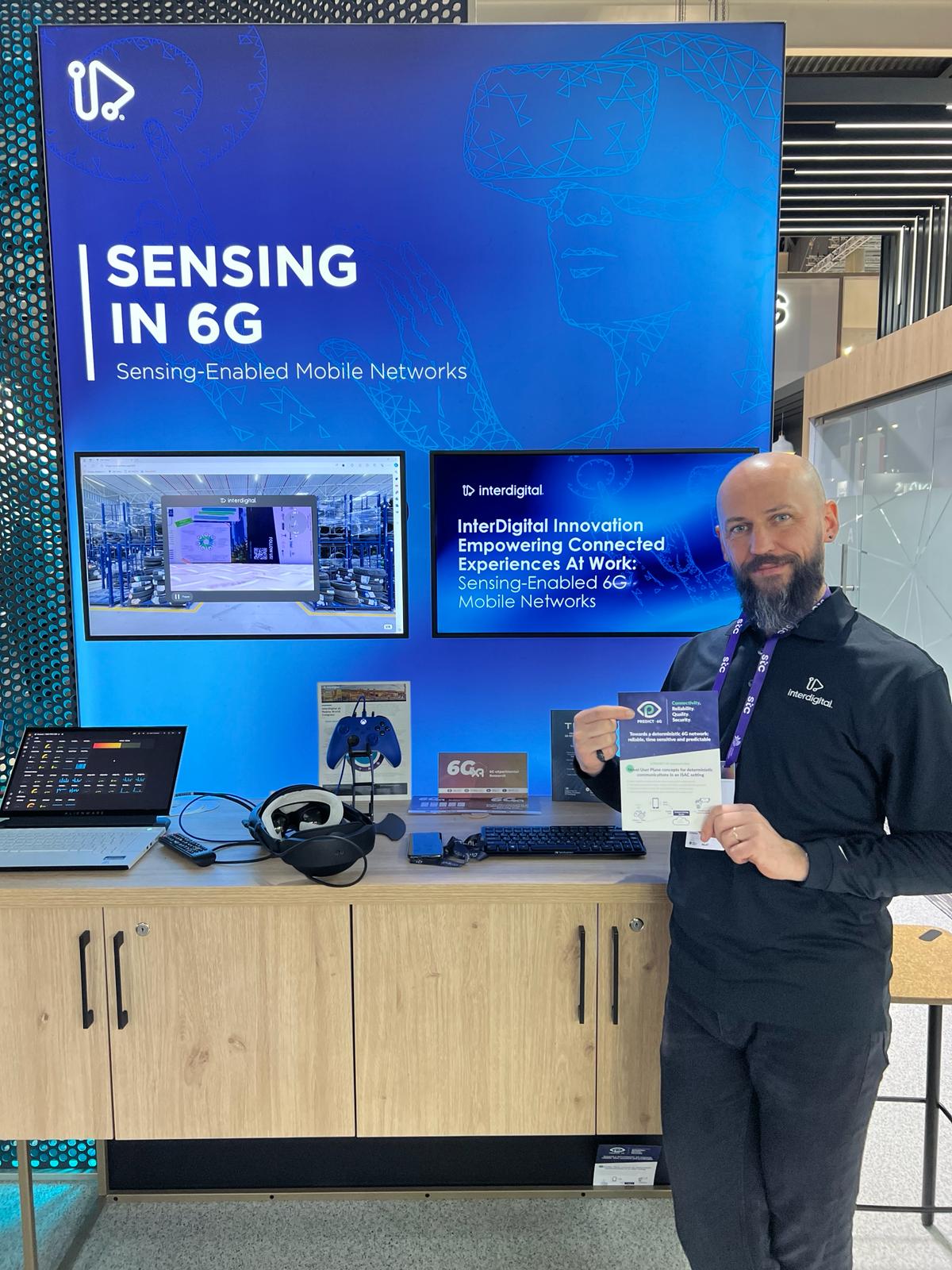
Dr. Sebastian Robitzsch from InterDigital, responsible for the standardisation of PREDICT-6G, showed our demo to the visitors of the MWC. The demonstration featured a mobile network for seamless wireless connectivity in a warehouse. An autonomous vehicle, equipped with distance and camera sensors, was connected to this network. Additionally, radar sensors on mobile devices enhanced security by detecting objects. Users controlled the vehicle remotely with a wireless glove, and sensor data was processed in the mobile network before being integrated into an application, enabling precise navigation in the warehouse.
If you want to stay updated about PREDICT-6G, subscribe to our newsletter and follow us on Twitter and LinkedIn!
International Day of Women and Girls in Science 2024
The 11 February marks the International Day of Women and Girls in Science. A milestone adopted in 2013 by the UN General Assembly to recognise that "full and equal access to and participation in science, technology and innovation for women and girls of all ages is imperative for achieving gender equality and the empowerment of women and girls".
In PREDICT-6G, as could not be otherwise, we join the UN declaration. Our consortium works towards the advancement of real equality within the academic and scientific world and ultimately, the society.
To understand better why this day is necessary, we refer to some data:
- According to UIS data, less than 30% of the world’s researchers are women.
- While women represent 33.3% of all researchers, only 12% of members of national science academies are women, says the UN.
- According to the UN, female researchers tend to have shorter, less well-paid careers. Their work is underrepresented in high-profile journals and they are often passed over for promotion.
In the European Union, the European Institute for Gender Equality (EIGE) statistics underline the “glass ceiling” continues to be very present. Women in academic and research represent 42% of the total staff and the number only decreases as seniority increases, including the presence of women in decision-making positions. They also receive less research funding, have less papers and inventorships. Contrariwise, women are a majority in terms of part-time and precarious work.
To celebrate, and also vindicate this day, PREDICT-6G interviewed Carla Fabiana Chiasserini, Full Professor at Politecnico di Torino and our consortium partner.
Q: What do you like most about your work as a scientist?
A: To be creative, envisioning new solutions. And, before that, to spot interesting aspects and pose problems whose solution can lead to technological advancements and have an impact on our daily life. It is always a challenge, but it’s what makes the work of a scientist exciting.
Q: Who were and are your female referents in the scientific world?
A: I learn something every time I meet and interact with a colleague. That said, I usually have lots to share with female researchers and lots to learn from them, from all of them, they are simply amazing.
Q: What advice would you give to a little girl who wants to pursue a career in science?
A: I can only encourage her to pursue it, and try and explore as many unexplored paths as possible. Not to fear them and not to get discouraged ever, mishaps of any kind are just part of the game.
If you want to stay updated about PREDICT-6G, subscribe to our newsletter and follow us on Twitter and LinkedIn!
PREDICT-6G and DESIRE6G co-organise the “6G-PDN Workshop” at MobiHoc 2023
We are pleased to announce that PREDICT-6G and DESIRE6G successfully co-organised the "6G Programmable Deterministic Networking with AI" workshop (6G-PDN)” on the 23 of October 2023, at the prestigious 24th International Symposium on Theory, Algorithmic Foundations, and Protocol Design for Mobile Networks and Mobile Computing (MobiHoc 2023) held in Washington DC, United States.
The '6G-PDN Workshop' served as a platform for leading researchers, industry experts, and academics to come together and discuss the roadmap and challenges of the technological areas within deterministic communications and deep network programmability in the context of 6G technology to support future end-to- end time-critical applications.
Hosted by the project coordinators of PREDICT-6G and DESIRE6G, Dr. Antonio de la Oliva and Dr. Chrysa Papagianni, respectively, the workshop spanned an entire day. It featured two keynote presentations delivered by Professor John Baras from the University of Maryland and Professor Kaushik Chowdhury from Northeastern University, along with three sessions dedicated to discussing academic papers around the following key topics:
- Deterministic Communications:
Exploring cutting-edge research on deterministic communication technologies that can provide ultra-reliable, low-latency communication links for critical applications such as autonomous vehicles, industrial automation, healthcare systems, and more. This is particularly relevant for PREDICT-6G, which focuses on creating a secure, modular, interoperable, and extensible deterministic network and management framework that automates the definition, provisioning, monitoring, fulfillment, and life-cycle management of end-to-end deterministic services over multiple network domains.
- Deep Network Programmability:
Delving into the advancements in deep network programmability, the ability to program the network fabric both vertically (control and data plane) and horizontally (end to end), that is expected to characterise the new generation of mobile networks, towards supporting extreme performance requirements and service-specific operations. DESIRE6G is in fact introducing deep programmability to the mobile network with the adoption of an end-to-end programmable data plane that supports multi-tenancy, using an abstraction layer to interact with the heterogeneous devices e.g., ASICs, CPUs, GPUS, DPUs etc.
- Transforming networking with AI
Native integration of AI is considered an integral feature of envisioned 6G systems both as a means for designing flexible, less complex, reconfigurable networks, as well as an intrinsic in-network intelligence feature. This is relevant to DESIRE6G that aspires to natively integrate AI in the 6G system architecture to support adaptive decision-making at different time scales with expected impact on energy and performance efficiency gains.
The workshop's key findings include the definition of digital twins, AI and sensing as key areas where deterministic and programmable networks can work together to achieve extreme KPIs.
The standout aspect of the workshop was without any doubt the excellent quality of our keynotes: “Extreme Reconfigurability for 6G: From Programmable Wireless Networks to Programmable Environments” by Professor Kaushik Chowdhury and “Next Generation Hybrid Network (core, 5G/6G, non-terrestrial) Automation: Integrated Model-Based and Data-Driven Systems Engineering” by Professor Baras, which attracted top researchers attending the MobiHoc conference.
The papers that were selected to be part of the workshop are listed below:
- A hierarchical AI-based control plane solution for multi-technology deterministic networks. Authors: P. Giardina, P. Szilágyi, C. Chiasserini, J. Carcel, L. Velasco, S. Spadaro, F. Agraz, S. Robitzsch, R. Rosales, V. Frascolla, R. Doostnejad, A. Calvillo, G. Bernini.
- Using RAW as Control Plane for Wireless Deterministic Networks: Challenges Ahead. Authors: C. Bernardos, A. Mourad, M. Groshev, L. Contreras, M. Roselló, O. Bularca, V. Frascolla, P. Szilagyi, S. Robitzsch.
- Aligning rTWT with 802.1Qbv: a Network Calculus Approach. Authors: C. Barroso-Fernández, J. Martín-Pérez, C. Ayimba, A. de la Oliva.
- Enabling Programmable Deterministic Communications in 6G. Authors: M. Thi, S. Said, A. Roberty, F. Chbib, R. Khatoun, L. Linguaglossa.
- In-Network Quality Control of IP Camera Streams. Authors: C. Györgyi, K. Kecskeméti, P. Vörös, S. Laki, G. Szabó.
- In-Network Security Applications with P4RROT. Authors: K. Kecskeméti, C. Györgyi, P. Vörös, S. Laki.
- Towards extreme network KPIs with programmability in 6G. Authors: G. Pongrácz, A. Mihály, I. Gódor, S. Laki, A. Nanos, C. Papagianni.
- Failure Prediction in Software Defined Flying Ad-hoc Network. Authors: D. Uomo, A. Sgambelluri, P. Castoldi, E. De Paoli, F. Paolucci, F. Cugini.
We extend our gratitude to all participants and to the esteemed keynotes, Professor John Baras and Professor Kaushik Chowdhury, for their invaluable contributions and insights shared during the event. Their expertise and perspectives significantly enriched our discussions, and we anticipate that they will continue to ignite further stimulating conversations in the future.
Stay tuned for future updates and events as we continue to strive towards shaping the future of 6G.
|
|

|
PREDICT-6G's third plenary meeting in Bucharest
On the 17th and 18th of October, the PREDICT-6G Consortium gathered for its third plenary meeting in Bucharest, Romania.
Over the course of these two days, the team looked back at the accomplishments achieved during the first 10 months of the project and set the roadmap to continue working towards the project’s main goal: to create a secure, modular, interoperable, and deterministic 6G network
During the meeting, the partners presented the current status of each work package, as well as the action plan for the next quarter of the project. There was also room for fun - who said it was incompatible with research? - at the innovation session hosted by Dr. Valerio Frascolla (INTEL), PREDICT-6G innovation manager and WP5 “Impact creation” leader.
Provided with simple premises and clear objectives, the team was challenged to think out of the box to complete a number of tasks. Afterwards, Dr Frascolla helped all participants to reflect on their different approaches and to extract some valuable lessons to implement when working on a new topic.
Hosted by SIMAVI, the Consortium also enjoyed a traditional Romanian dinner where there was time for more informal exchanges that, without a doubt, strengthened the team bond.
If you want to stay updated about PREDICT-6Gt, subscribe to our newsletter and follow us on Twitter and LinkedIn!
D3.1 - Release 1 of AI-driven inter-domain network control, management, and orchestration innovations
The PREDICT-6G deliverable 3.1 - Release 1 of AI-driven Inter-domain Network Control, Management, and Orchestration Innovations, is now available in Zenodo for public reading.
The document discusses the initial functional design of the AI-driven multi-stakeholder inter-domain control plane (AICP), the PREDICT-6G control plane solutions to seamlessly integrate a data plane building of a set of multi-technology deterministic domains.
AICP relies on 4 key technological enablers:
- AI/ML, for smart resource allocation.
- Digital Twins, for system and (deterministic) service KPI predictably.
- Data Collection and Management, for continuous monitoring of the services.
- Inter-domain orchestration for the management of E2E deterministic service lifecycle.
The issue of how to represent the different technologies, by constructing the underlying networks, within the AICP is also discussed, as it is an issue that can be considered crucial for the proper lifecycle management of deterministic E2E services.
As part of PREDICT-6G’s commitment to open science, the project uses the Zenodo repository to contain and make publicly available all the information and data related to its development.
You can read and download the Deliverable 3.1 - Release 1 of AI-driven inter-domain network control, management, and orchestration innovations here.
If you want to always stay updated about our project, subscribe to our newsletter and follow us on Twitter and LinkedIn!

